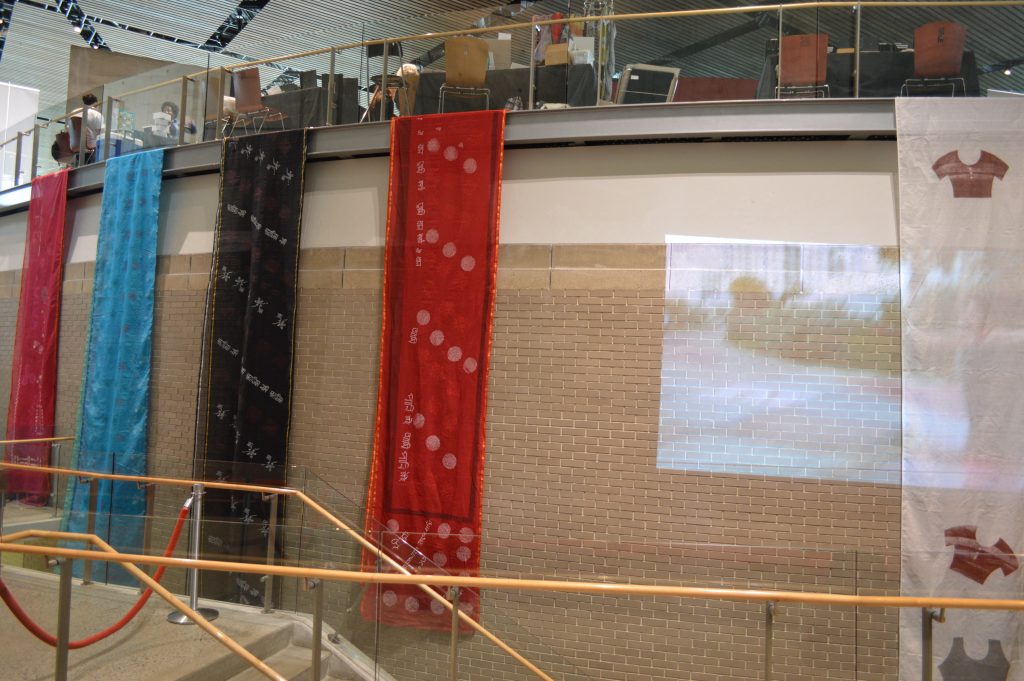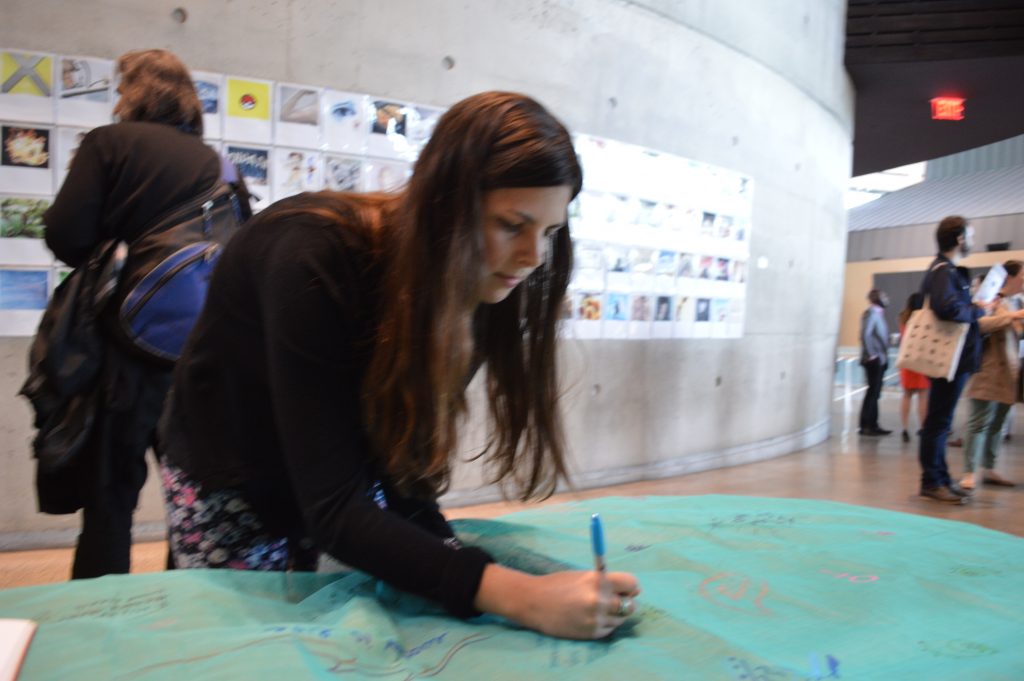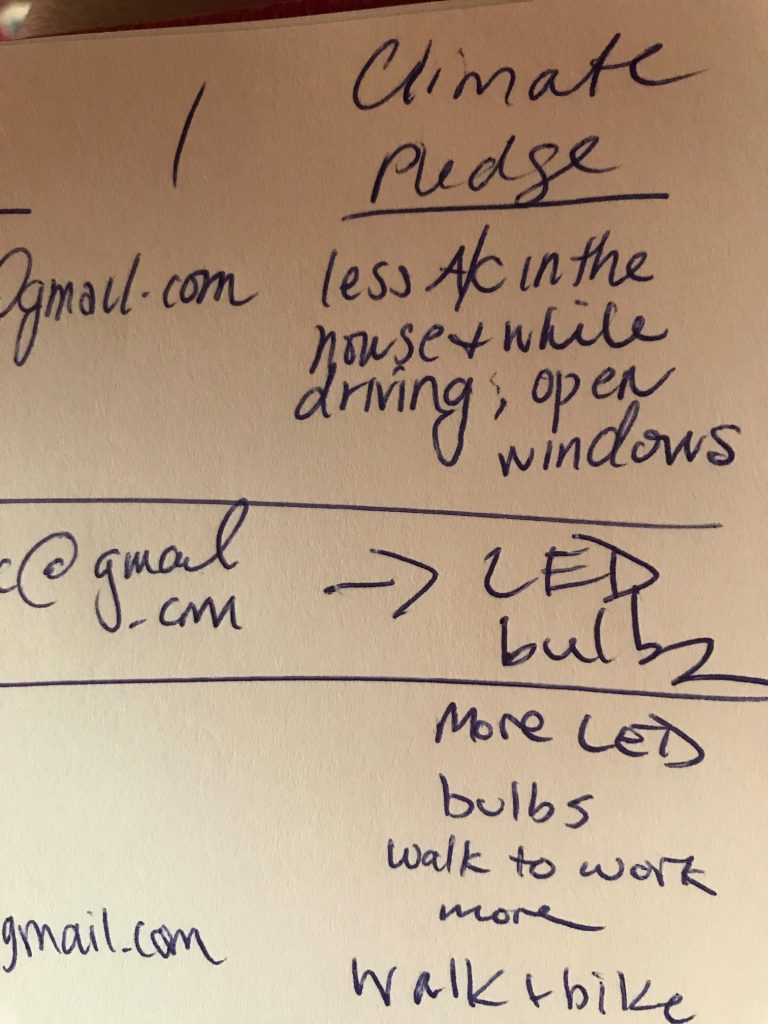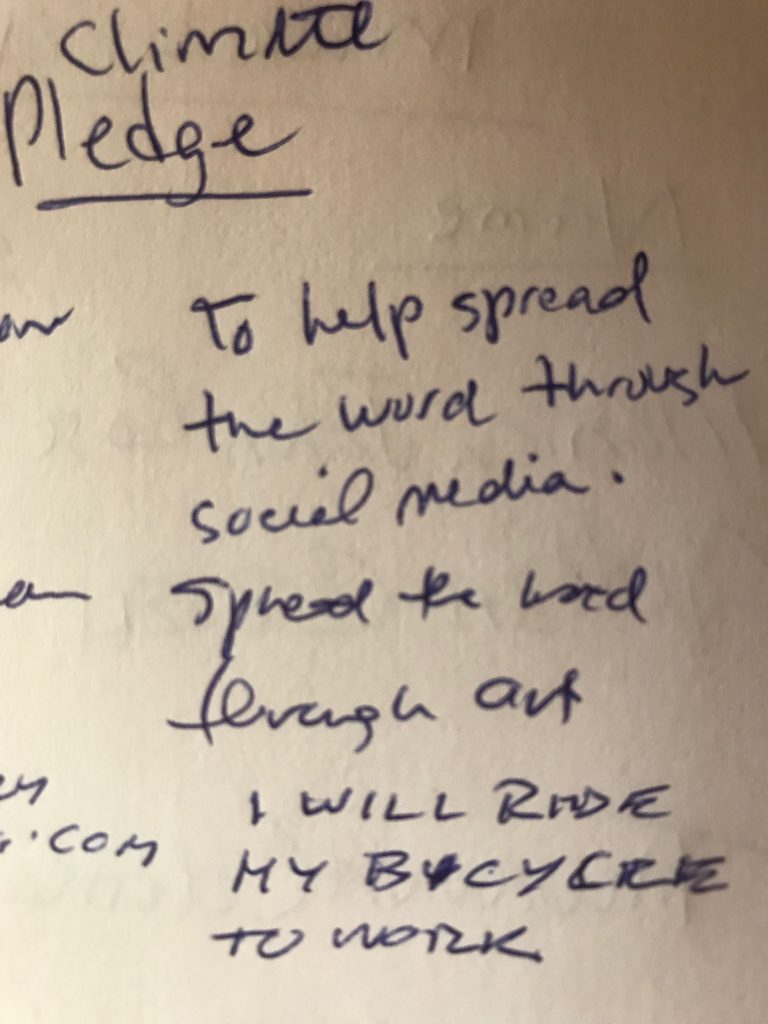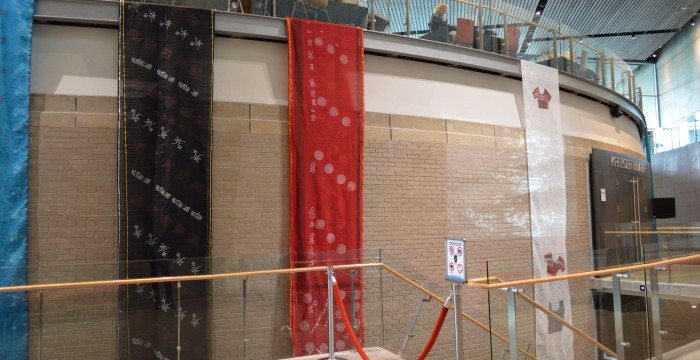
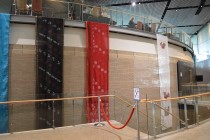
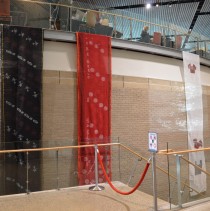
VisionDC at the Arena Stage
As a socially-engaged DC artist, Monica Jahan Bose was asked to create an installation for the VisionDC Arts & Innovation Summit, a convergence of DC art makers to discuss the state of the arts in DC today. Installations are always a somewhat harrowing adventure, but when we found out we could only install Monica’s saris on the morning of the event, we had to brace ourselves to arrive at the Arena Stage by 5:30 a.m.! Monica got there first, and had the kind assistance of another Monica (who worked for Vision DC). I arrived just before 6 a.m. (a saving grace email came to me from Monica, “It’s ok if you come closer to 6 am. Someone is supposed to help me unload and then I will park the car.”). I got nice and grumbly at the outset of installation (my coffee hadn’t kicked in…?!), but, then, another amazing volunteer, Aileen, swooped in, and helped Monica and me interpret each other through the surprisingly sound-proof glass banisters separating us! Aileen and I would take turns popping up to get our heads higher than the glass partitions so we could hear Monica’s instructions, and share how the work was progressing. Amazingly, we managed to install all of the saris before the event’s official start time of 8:30 a.m.
Monica had set up a looping video of women in Katakhali, Bangladesh, working on sari-making, as well as a table with a sari, ready for new climate-friendly pledges. As people trickled in, grabbing their complimentary coffee and donuts, they’d stop by our table and make a pledge. We had some good ones:
“WALK WALK!”
“Build my tiny house”
“Actually install the rain barrels.”
As the day progressed, more and more people stopped by to discuss climate change, Katakali and, changing their habits to create a more sustainable lifestyle.
Monica was able to join some very interesting talks and brainstorming sessions, generating new ideas on how to make the DC arts scene more robust and inclusive. At the end of the day, more people had learned about our projects and had taken a precious moment to consider how they can positively impact and reverse climate change.
-Juliet Hutchings, Intern

